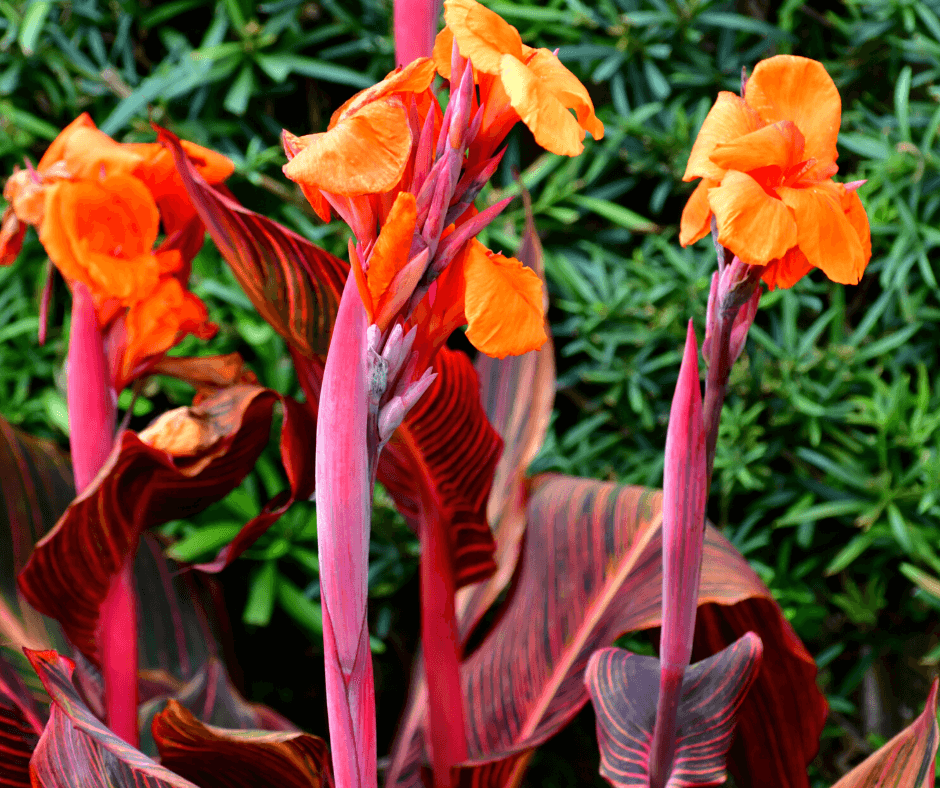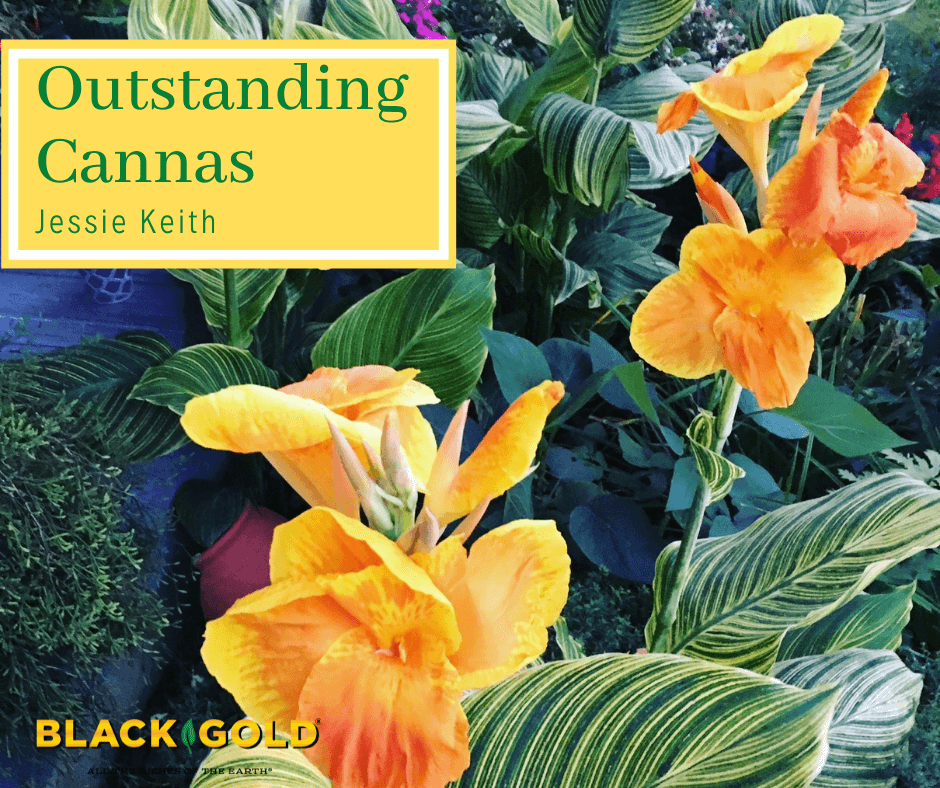
Cannas are summer-garden workhorses. They grow lushly in the hottest months, only requiring regular water, partial sun, and maybe a hit of slow-release fertilizer at the beginning of the season. Their leaves are bold and lovely, their tropical flowers come in lots of warm pretty colors, and hummingbirds are prized pollinators. The plants also spread and are easily divided and shared. My garden will never be without one.
Canna Origins
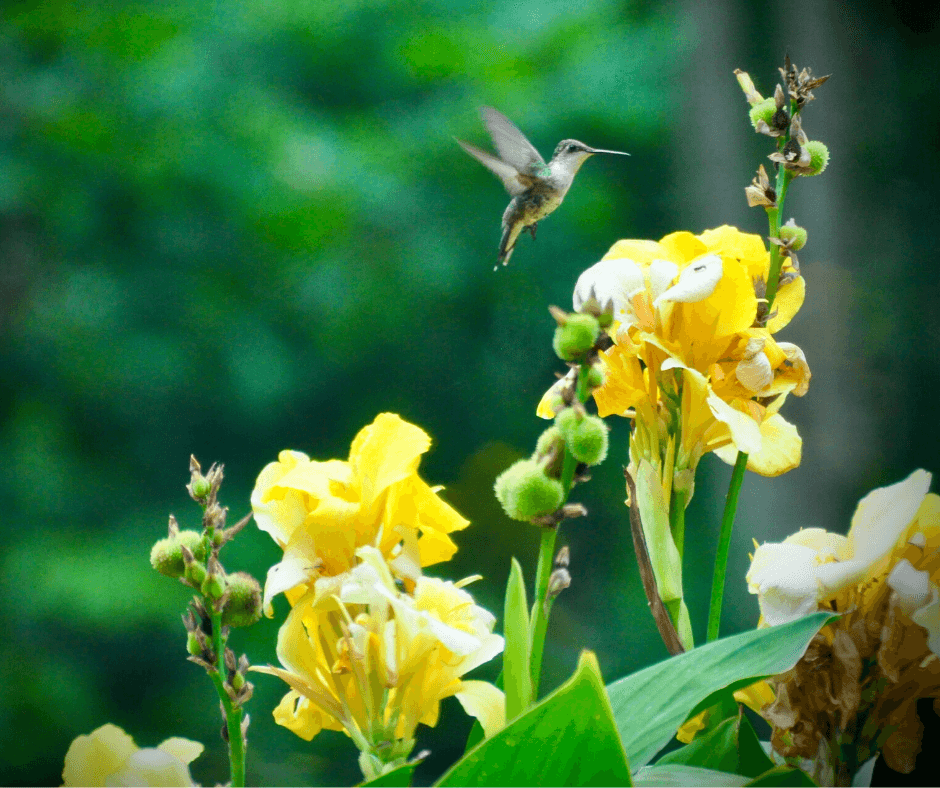
Cannas (Canna hybrids, Zones 8-11) are subtropical to tropical and American. There are 12-21 accepted species, depending on who you reference. These are found in Mexico, Central America, the Caribbean, and tropical South America. The common garden type is Canna × generalis, a hybrid of several species. They were cultivated by native Americans, presumably for both their attractive flowers and fleshy, edible roots. In the late 1900s, cannas were popularized in European and then North American gardens. Since this time, many attractive hybrids have been developed, with new varieties appearing now and then.
Ten Favorite Cannas
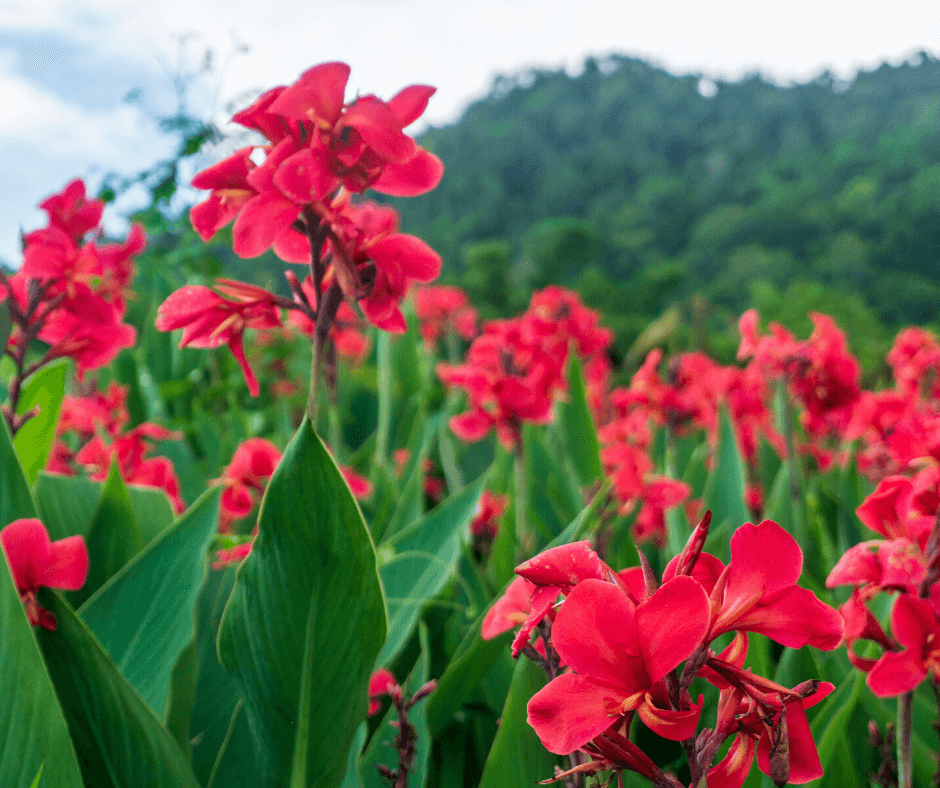
‘Alaska‘ (3-4 feet): Large cream-colored blooms are the great beauty of this compact canna, and its blue-green foliage is also respectably pretty. It gets all-around rave reviews.
‘Australia‘(4-5 feet): Large red flowers and big bronzy-purple leaves make this impressive canna a standout. If you are looking to fill a large space with lots of reliable color, this is your canna. It contrasts well with orange- and yellow-flowered plants.
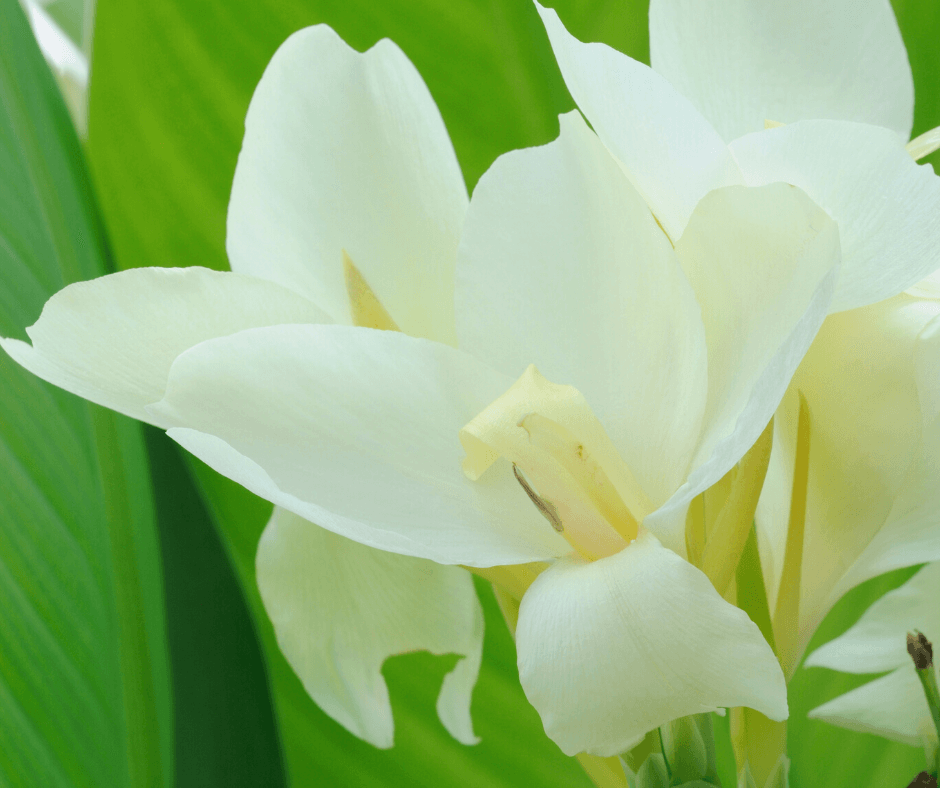
‘Cleopatra‘ (4-5 feet): Expect explosive fireworks of color with ‘Cleopatra’. Its impressive green leaves have irregular blocks of dark purple. These are in stark contrast to its flowers, which are half red and half yellow with red spots. Expect it to receive many compliments.
‘Kreta‘ (3-4 feet): Here is a great canna for nonstop flowers. Its numerous red blooms are prolific and attract lots of hummingbirds and rise above large green leaves.
‘Musifolia‘ (6-8 feet): This old canna variety is grown for its tall stature and impressive large leaves with hints of red and purple. In the height of summer, it will also offer spikes of small red flowers.
‘Phasion‘ (syn. ‘Durban’ and ‘Tropicanna’, 3-4 feet): Most regard this as the most electrifying of all cannas. Few garden plants can challenge its impressive tropical palette of colors. Its striped leaves alone are a masterpiece, and its brilliant tangerine-orange flowers add the winning touch.
‘Striata‘ (syn. ‘Praetoria’, ‘Bengal Tiger’, and ‘Aureostriata’, 5-6 feet): My garden is never without a ‘Striata’ for summer color. Its pale-yellow striped leaves provide a more neutral backdrop for the light orange flowers it produces from midsummer to frost in my area.
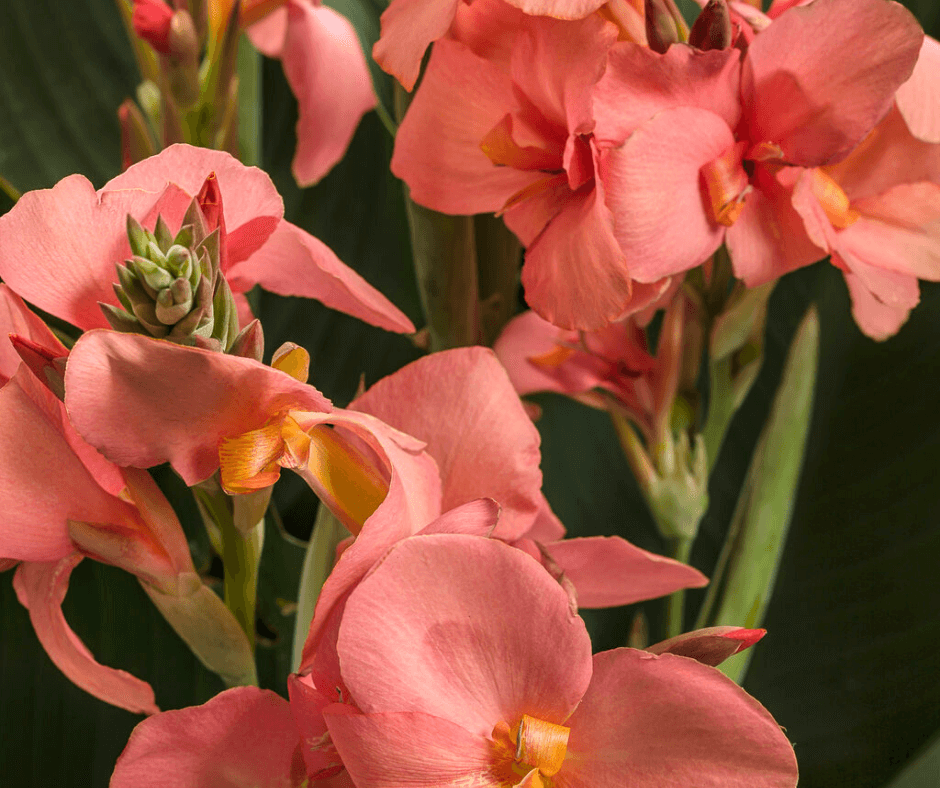
‘Tenerife‘ (3-4 feet ): Big golden flowers speckled with deep orange-red make this an extra lovely compact canna. Its leaves are medium green.
‘Wyoming‘ (3-4 feet): I always confuse ‘Wyoming’ and ‘Australia’ because they are comparable in every way except flower color. This one has beautiful orange flowers to offset its purplish-bronze foliage.
Toucan® Series (Scarlet, Yellow, Dark Orange, Coral, 2.5-4 feet): Toucan cannas are big bloomers on short-statured plants. They come highly recommended for containers. Expect them to perform beautifully all summer long.
Canna Care
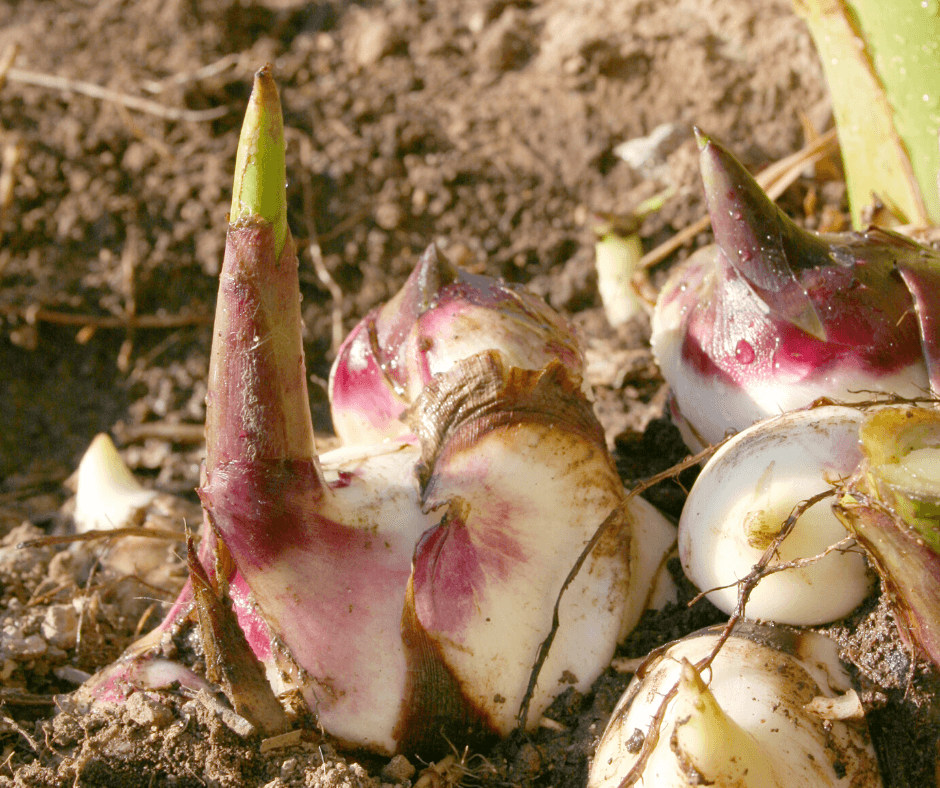
Cannas are lush, tropical to subtropical perennials that grow best in the full to partial sun. They thrive in rich moist to average soils–the addition of organic matter at planting time is recommended. Black Gold Garden Soil is a great choice. Provide a boost of continuous-release fertilizer formulated to encourage good growth and flowering. They originate in warm, humid, rainy areas and appreciate regular water. Many even grow well along pond margins or boggy spots. When conditions are warm, they will flower. If they are not hardy where you live, dig their dense, fleshy rhizomes in the fall and store them in a cool, dark place through winter. Plant them again outdoors when the soil has warmed and frosts are gone.
Canna Yellow Streak Virus
Several viral diseases will put a damper on canna growth and flowering. The two most common are the canna yellow streak virus (CaYSV) and the canna yellow mottle virus (CaYMV). Infected plants show abnormal leaves with browning or yellowing streaks or mottled patterns. If your canna leaves exhibit these, dig and dispose of them immediately. When replacing them, buy only certified virus-free stock (specialty growers are usually the most reliable source). Be sure not to reuse the potting soil, if your diseased plants were in containers.


